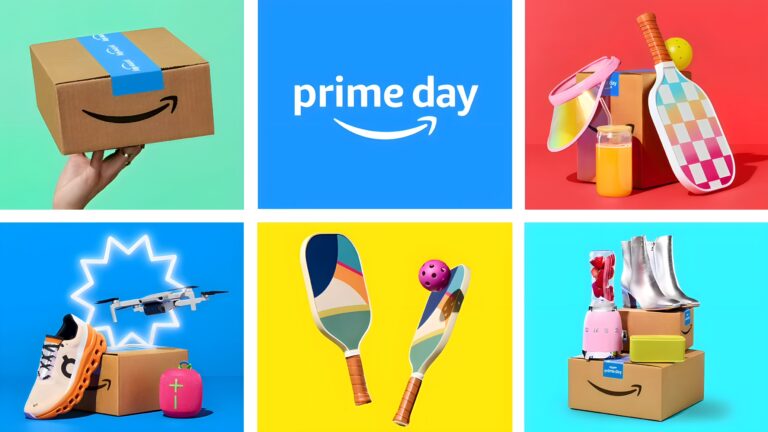Whether you are a well-known fashion brand or smaller niche ecommerce business, having good, well optimised and written content is just as important as ever. Content marketing is still a crucial means of communication to your current and potential future customers, especially for ecommerce brands and can help to build brand awareness, generate leads, promote a business’ values and much more.
Discover how to write effective content for ecommerce sites with the steps below.
What is content marketing for ecommerce businesses?
As the name suggests, content marketing involves the strategic creation of content to assist in the promotion of a brand or its products. The content that is created needs to be relevant, attractive and engaging to the target audience for it to succeed. Examples of modern forms of content marketing for ecommerce businesses include:
- Podcasts
- Videos
- Infographics
- Interactive maps, charts and diagrams
- Blog articles
While there is a near-endless variety of content types, the main focus still for many businesses is blog articles. Not only do they typically offer a lower production cost compared to other content types (such as videos or podcasts), but their potential outreach through online channels such as SEO is immense.
That being said, putting pen to paper as a brand requires strategic planning for the blog article to succeed. There are many factors to consider when writing content for an ecommerce site. From generating ideas to tracking the final outcome, we share our strategy on writing effective blog articles for any ecommerce brand or retailer.
Stage 1: Research & Planning
To give your content the best possible chance at success, a thorough level of research and planning needs to occur before you start anything. Like a classic ‘conversion funnel’, we want to take the same approach when it comes to planning content—start with a wide net to capture ideas, which we then funnel down into one final blog article concept during the process.
How to research blog article ideas
Instinctually, many ecommerce businesses will start by using digital marketing tools to generate content ideas. While using keyword research to form the basis of your blog article is key, it’s also important to marry this planning with additional research to fully flesh out other ideas.
Ultimately, the content is going to be engaged with by your target audience, so getting a complete picture of their content needs is essential. Consider using the following methods to further research topic ideas and your reader’s needs:
- Using customer interviews, reviews and focus groups
- Mapping out the customer journey and analysing pain-points within it
- Viewing customer enquiries to answer common questions
- Completing competitor research to uncover content gaps
- Researching customer forums and online communities
- Utilising recent trends to pair the brand with
- Analysing top-selling products or product categories
- Measuring previous high-performing content on social media channels
- By pairing customer-focused research with keyword planning, your content will have the framework to succeed online and with the target audience.
Evergreen vs. Seasonal Content Marketing
Blog article topics can be typically divided between two categories, Evergreen and Seasonal. By choosing which category your content falls into will help plan when is the best time of year to publish it.
- Evergreen: Content that is relevant to the audience all year round.
- Seasonal: Content that is relevant to the audience at a specific time or period during the year.
An example of Evergreen content could be a Product Buying Checklist (such as a ‘Buyer’s Guide to Football Boots’), while a Seasonal content example could be a Gifting Guide (such as a ‘Father’s Day Gift Guide’).
However, depending on your chosen topic, the choice between Evergreen or Seasonal is predetermined which makes this step easier.
How to plan your blog article
With a topic decided, it’s time to decide on the content of the article:
- What do you want to include in it? Write down all the sections you want within the article and any notes based on your research. It is also worth deciding what you don’t want to speak about in the article. Doing this will help keep you focused on the topic at hand and not get sidetracked while writing.
- What is the core message you want the audience to receive? Are you using this article to create brand awareness, generate leads, sell a product or something else? Deciding on the core message will help track the success of the article once it’s published.
- What media do you have access to which will complement the content? How will any images, videos, graphs, maps or other media be accessed or created for the blog article? If you plan on using statistics or quotes in the content, also start collecting sources for those too.
- How will the content be amplified once published? Other than being posted on the blog, will the article be shared on social media channels, influencers, eDMs, downloaded as a white paper or any other means?
- Is there a deadline the article needs to be written by? Particularly in the case of Seasonal content or an article that has been written off the back of a current trend.
Ideally, an article brief can be created before writing content to ensure the article is well researched and optimised. It will also allow the writer to easily see what will be featured in the content and any information needed to create it.
Stage 2: Writing & Content Creation
If you’ve followed the process so far, you will now have a highly detailed plan for your article. All that is left to do is create it.
Before writing a blog article
- Who is writing the content? Will it be created by an internal team such as marketing? Or will you be using an external asset such as an agency or guest poster?
- Does the brand have a tone of voice document? Read the tone of voice document to understand how the business wants to be portrayed through the copy before starting.
Writing for user experience
While your blog article must feature the keywords you want to rank for, it’s equally important that the article is primarily written for a real-life audience, not Google. The customer is king when it comes to content, but what does this mean in practice?
- Keep keywords natural: While it may feel obvious, the language and choice of words you use needs to be natural. Don’t inject blatant keywords into a sentence—instead, phrase them naturally and let them blend into the sentence.
- Speak to your audience: Use language your readers can engage with. Fun, casual brands may prefer to use slang and abbreviations, while a more corporate business could have an audience that prefers technical terms and more direct phrases.
- Use bullet points, numbers and tables: Instead of large walls of text, make it as easy as possible for your readers to consume your content. Bullet points, numbering and tables help make information easily readable to both your audience and search engine crawlers.
- Internal linking best practice: Whether you’re linking to a product, service or another piece of content, internal linking also needs to be authentic, relevant and natural. Ideally, the anchor text needs to be similar to the page you are linking to. Don’t use the word ‘here’ or ‘now’ to link to other pages, as it’s not good for a reader’s experience.
- Heading hierarchy: Clear and concise headings that use long-tail keyword phrases allow the reader to easily differentiate the sections of your content. Search engine crawlers also use your headings to understand content and rank it for those queries.
Completing a first draft
Whenever possible, always create a draft of your article before publishing it. This allows time for another person within or outside of your team to proofread and sense check the content. In particular for more technical topics, having someone outside of your team read through the article will help ensure it can be understood by people of different knowledge levels if that is a goal for the content.
When an article is ready to go live, ensure that it has had a spelling and grammar check, and that all links work correctly.
Stage 3: Tracking & Optimisation
To further enhance your ecommerce content marketing strategy, blog articles need to be tracked and optimised in the future. Not only is it important to ensure the content engages your target audience, but it also allows you to adapt your strategy based on what did and didn’t work.
Tracking & measuring your content marketing
If you had created a goal as part of your article brief in the planning stage, it is simple to use that objective as your main way of measuring the success of your content. That being said, content can serve many purposes, which the goal should reflect. Here are a few objectives that you can measure your content by:
- Reporting traffic, new users, keyword rankings and other metrics through Google Analytics or SEO tools
- Acquiring reader feedback through surveys or comments
- Counting email sign-ups or leads
- Analysing conversion metrics such as revenue or click-through rate
- Measuring social shares, likes and clicks
- Creating brand awareness and reviewing unlinked mentions on other sites
- Manually checking rankings for keywords
How to optimise content in the future
Updating and optimising your article breathes new life into your content—help setting it up for long-term SEO success. Both your audience and search engines benefit from content optimisation, making it an important factor that needs to be included in the blog article’s lifecycle. These are many ways to update and optimise your content, some of which include:
- New information based on the topic
- New content based on current trends or styles
- Updating statistics or quotes
- Updating imagery
- Updating tone of voice
- Adding videos, infographics or other rich media
- The audience gains new information that will help inform their decision, while search engines are able to rank the article for additional keywords based on the new content.
The importance of content for ecommerce sites
It’s no secret that content marketing needs to be part of your wider ecommerce strategy. Its longevity, low cost to produce and ability to grow online authority makes it highly attractive to ecommerce businesses. Other key benefits for content marketing include:
- Builds brand awareness
- Builds domain authority
- Can target long-tail keywords that category and product pages typically don’t rank for
- Can achieve a number of non-direct revenue-driving goals (such as lead generation)
- Educates the customer through information and expertise
- Produces additional opportunities to gain new users and traffic
- Increases positive user signals such as pages per session and time on site
- Complements other online channels such as social, paid search, CRM and affiliate marketing
- Allows your site to rank for additional rich snippets and universal search results
Throughout all the stages of creating content—planning and research, writing and creating content, and tracking and optimisation—the customer needs to always be the primary focus. The content is going to be read, consumed and ultimately actioned upon by them.
For more information about building an ecommerce content marketing strategy, contact Pattern Australia now.



